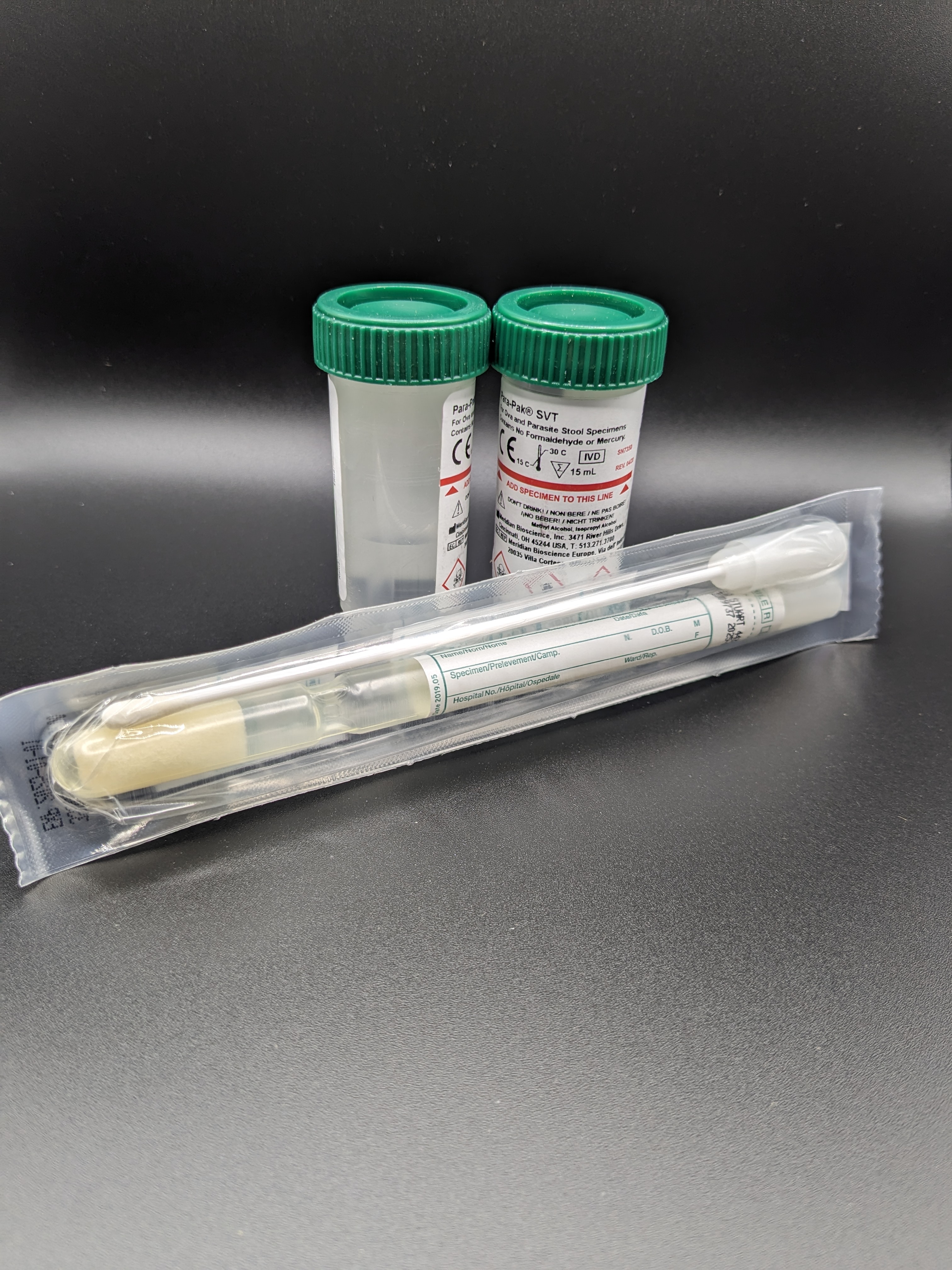
Latest Blog Articles

Diagnostic Innovations
Diagnostic Innovations in Parasitology: Revolutionizing Detection and Treatment
Parasitology, the study of parasites and their interactions with hosts, has witnessed significant advancements in diagnostic methodologies over recent years. These innovations are pivotal in improving the accuracy, speed, and accessibility of detecting parasitic infections, ultimately enhancing treatment outcomes and controlling the spread of these diseases. Here, we delve into some of the most groundbreaking diagnostic innovations in parasitology.
1. Rapid Diagnostic Tests (RDTs)
Rapid Diagnostic Tests have revolutionized the field of parasitology by providing quick, easy-to-use, and highly specific tests for detecting parasitic infections. These tests often utilize immunochromatographic techniques, where a drop of blood, urine, or saliva can be used to identify the presence of a parasite-specific antigen. Key benefits include:
Speed: RDTs deliver results within minutes, enabling prompt diagnosis and treatment.
Simplicity: They require minimal training to administer, making them ideal for use in remote and resource-limited settings.
Portability: RDT kits are compact and can be easily transported, facilitating fieldwork and on-site diagnostics.
Examples include malaria RDTs, which detect Plasmodium antigens, and tests for schistosomiasis that identify schistosome antigens in urine.
2. Point-of-Care Diagnostics
Point-of-care (POC) diagnostics have transformed how parasitic infections are detected by enabling testing to be conducted at the site of patient care. These devices are designed to be user-friendly, providing immediate results that can inform clinical decisions without the need for sophisticated laboratory infrastructure. Notable advancements include:
Lateral Flow Assays: Similar to pregnancy tests, these assays detect parasite antigens or antibodies and are used for diseases like leishmaniasis and filariasis.
Portable Molecular Diagnostics: Devices like the GeneXpert system, which can detect DNA or RNA of parasites, have been used for diagnosing tuberculosis and are now being adapted for parasitic diseases.
3. Molecular Diagnostics
Molecular techniques have greatly enhanced the sensitivity and specificity of parasite detection. Key molecular diagnostic methods include:
Polymerase Chain Reaction (PCR): PCR amplifies parasite DNA or RNA, allowing for the detection of very low levels of infection. This method is particularly useful for detecting parasites that are difficult to identify using traditional microscopy, such as Toxoplasma gondii or Cryptosporidium.
Loop-Mediated Isothermal Amplification (LAMP): LAMP is a cost-effective and rapid alternative to PCR, capable of amplifying nucleic acids at a constant temperature. It has been successfully applied to detect malaria and other parasitic infections in field settings.
4. Next-Generation Sequencing (NGS)
Next-Generation Sequencing has opened new avenues for parasitology diagnostics by enabling comprehensive analysis of parasite genomes. This technology can be used for:
Species Identification: NGS can differentiate between closely related parasite species and identify mixed infections.
Drug Resistance Profiling: Sequencing the genomes of parasites can reveal mutations associated with drug resistance, guiding effective treatment strategies.
Epidemiological Surveillance: High-throughput sequencing provides insights into the genetic diversity and transmission dynamics of parasites, aiding public health interventions.
5. Biosensors and Lab-on-a-Chip Technologies
Biosensors and lab-on-a-chip devices represent cutting-edge innovations that integrate microfluidics and nanotechnology for parasite detection. These devices offer several advantages:
High Sensitivity: Biosensors can detect minute quantities of parasitic biomarkers, such as proteins or nucleic acids.
Automation: Lab-on-a-chip systems automate multiple steps of the diagnostic process, from sample preparation to detection, reducing the potential for human error.
Multiplexing: These platforms can simultaneously detect multiple pathogens, providing a comprehensive diagnostic profile.
6. Digital and AI-Driven Diagnostics
The integration of digital technologies and artificial intelligence (AI) in parasitology diagnostics is a rapidly growing field. Innovations include:
Digital Microscopy: AI algorithms are used to analyze microscopic images of blood smears or tissue samples, improving the accuracy and speed of parasite identification. Digital microscopy is particularly useful for detecting malaria parasites in blood smears.
Mobile Health (mHealth) Applications: Smartphone-based diagnostic tools and apps enable remote data collection and analysis, facilitating real-time monitoring of parasitic diseases in endemic areas.
7. Serological Tests and Immunoassays
Serological tests detect antibodies or antigens related to parasitic infections, providing valuable information about exposure and immunity. Recent innovations include:
Enzyme-Linked Immunosorbent Assay (ELISA): ELISA tests are widely used for diagnosing parasitic infections such as echinococcosis and toxocariasis. Newer versions of ELISA are being developed to enhance sensitivity and reduce cross-reactivity.
Multiplex Immunoassays: These assays can detect multiple antibodies or antigens in a single test, offering a comprehensive assessment of parasitic exposure and infection status.
8. Metabolomics and Proteomics
Metabolomics and proteomics are emerging fields that study the metabolic and protein profiles of parasites and their hosts. These approaches can identify specific biomarkers of infection, aiding in the development of novel diagnostics. Innovations include:
Mass Spectrometry: Advanced mass spectrometry techniques are used to analyze parasite proteins and metabolites, providing detailed information about the parasite's biology and potential diagnostic targets.
Biomarker Discovery: Identifying unique metabolic signatures associated with parasitic infections can lead to the development of non-invasive diagnostic tests, such as breath or urine analysis.
Conclusion
The field of parasitology is undergoing a revolution driven by diagnostic innovations that enhance the accuracy, speed, and accessibility of detecting parasitic infections. From rapid diagnostic tests and point-of-care devices to molecular and digital technologies, these advancements are crucial for improving patient outcomes and controlling the spread of parasitic diseases. As research continues to evolve, the integration of multidisciplinary approaches and cutting-edge technologies promises to further transform parasitology diagnostics, paving the way for more effective disease management and public health interventions.
Discover What's Really Going On Inside Your Gut!
Experiencing stomach troubles? Our Full GI Panel Test can help! Identify bacteria, parasites, and fungi with state-of-the-art accuracy. Quick, non-invasive, and thoroughly analyzed by experts.
Take the first step towards better gastrointestinal health today!
Feel Refreshed and Balanced with Freedom Cleanse Restore!
Reset your digestive system and boost your overall well-being with our Freedom Cleanse Restore supplement. Designed to support detoxification, promote digestive health, and enhance nutrient absorption.
Reclaim your health—experience the benefits today!
Contact Information
11445 E. Via Linda, #2-419
Scottsdale, Arizona 85259 USA
1-480-767-2522
Hours: 7:30am to 4:00pm
Monday through Thursday.
Hours: 7:30am to 1:00pm on Friday.
Closed Saturday - Sunday.



